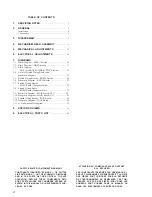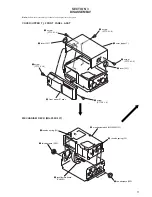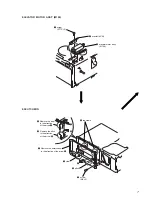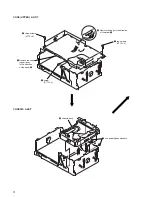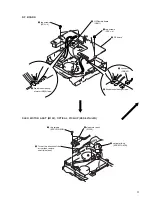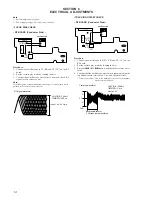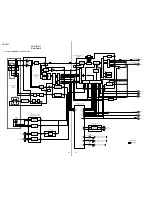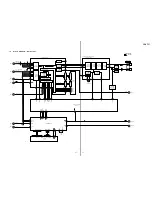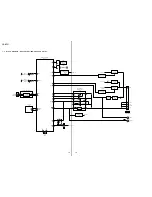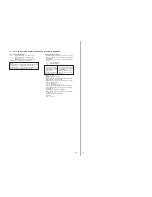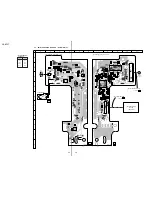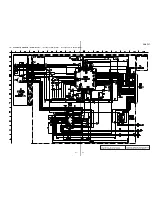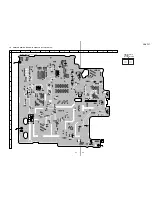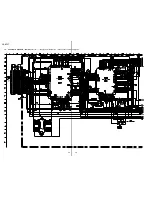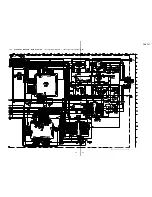
14
SECTION 6
ELECTRICAL ADJUSTMENTS
Note:
1.
Perform adjustments as given.
2.
Power supply voltage: DC14.4 V (more than 3A).
• FOCUS BIAS CHECK
– RF BOARD (Conductor Side) –
Procedure:
1. Connect the oscilloscope to TP (RF) and TP (VC) on the RF
board.
2. Put the set into play mode by loading the disc.
3. Confirm that oscilloscope waveform is clear and check RF
signal level is correct or not.
Note:
Clear RF signal waveform means that the shape “
◊
” can be clearly distin-
guished at the center of the waveform.
• TRACKING OFFSET CHECK
– RF BOARD (Conductor Side) –
Procedure:
1. Connect the oscilloscope to BP11 (TE) and TP (VC) on the
RF board.
2. Put the set into play mode by loading the disc.
3. Press the
.
AMS
>
button, and check the traverse wave-
form*.
4. Confirm that the oscilloscope waveform is symmetrical on the
top and bottom in relation to 0 V dc, and check this level.
* Traverse waveform: This is the tracking error wave form appears
when crossing the track.
TP
(VC)
IC11
IC51
CNJ12
TP (RF)
oscilloscope
+
–
RF signal waveform
VOLT/DIV: 200 mV
TIME/DIV: 500 ns
level: 1.4
±
0.3 Vp-p
TP
(VC)
IC11
IC51
CNJ12
BP11
(TE)
oscilloscope
+
–
A
B
0 V
A=B
traverse waveform
(100 track jump waveform)
VOLT/DIV : 500 mV
TIME/DIV : 2 ms
Center : 0 V
Traverse waveform
Summary of Contents for Xplod CDX-737
Page 4: ...4 4 ...


